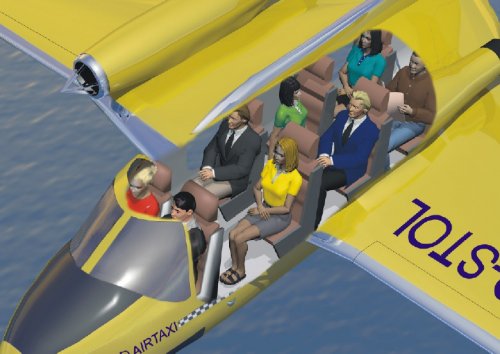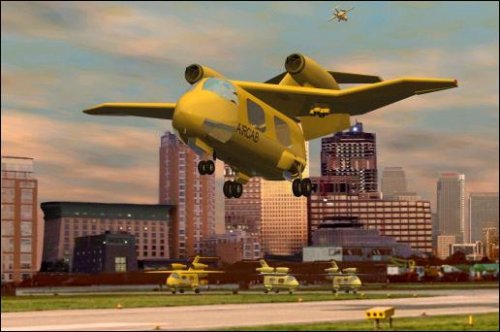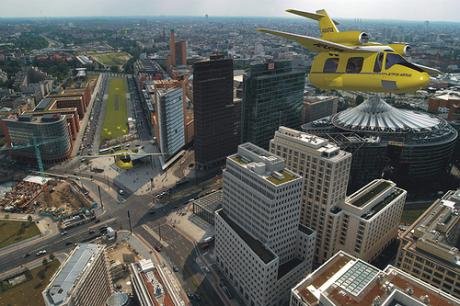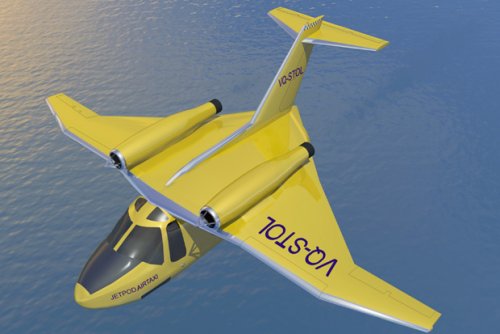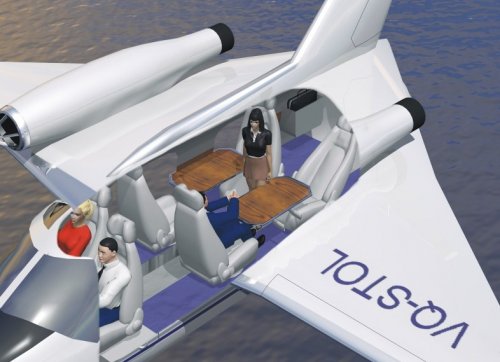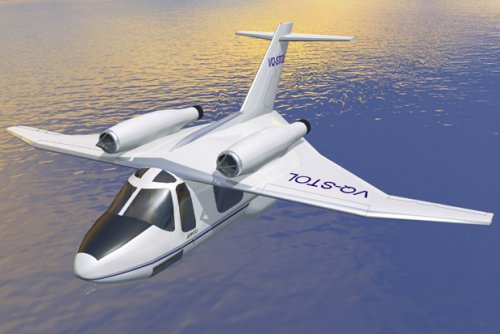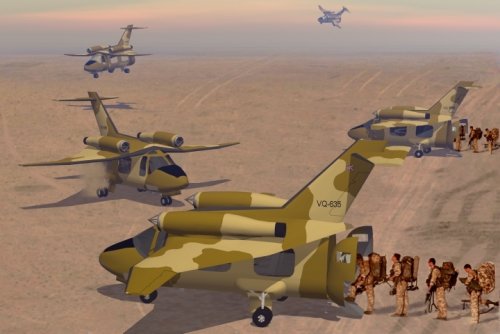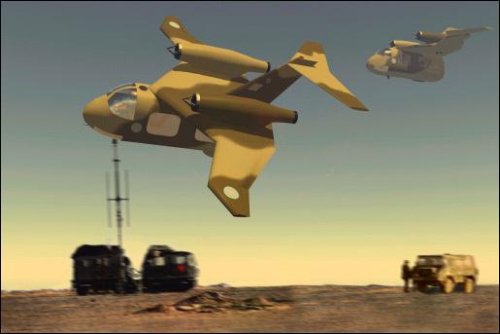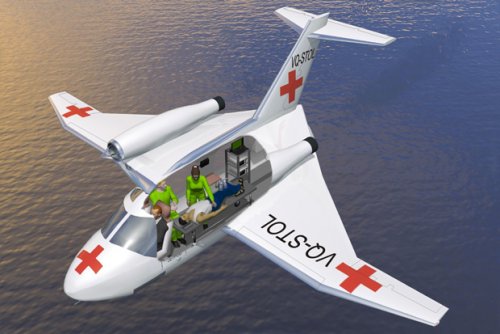The Avcen Jetpod was a design proposal for a very quiet aircraft that can take off and land in short distances (STOL), developed by Avcen Limited, a company formed in 1998 to promote development of the Jetpod. Avcen described its aircraft as a Very Quiet Short Take-Off and Landing (VQSTOL) aircraft.
Advantages of the Avcen Limited Jetpod:
Roles:
Artist's impression of Avcen Jetpod T100 Aircab.
Source:
http://www.prweb.com/releases/2005/04/prweb233558.htm
http://www2g.biglobe.ne.jp/aviation/avcen.html
http://dylanz.net/wp/2009/08/flying-cars/
http://web.archive.org/web/20060422105436/www.avcen.com/jetpod.php
http://en.wikipedia.org/wiki/Avcen
Advantages of the Avcen Limited Jetpod:
- 50% less jet noise
- The VQSTOL Jetpod offers much more than Extreme STOL (ESTOL) by virtue of its low noise;
- 125 metres (410 feet) take-off and landing distance, assisted by a unique through-wing thrust component;
- 300 kts (350 mph – 550 kmph) low-level cruising speed;
- Less exhaust gas emission per seat mile compared to car transportation
- 20% less pollution based on two cars over the same distance with 7 passengers or,
- 75% less pollution based on 7 less sole-occupancy cars over the same distance or,
- 35% less overall pollution averaged across a localized civil fleet of T-100s and P-200s;
- The Jetpod has been designed to carry out multiple daily flight sectors (50 plus) using a very rugged tricycle dual-tyre undercarriage. The Jetpod can land on grass, dirt or stone-strewn landing areas.
- 75 Jetpods would service a city the size of London this is equivalent to 37,000 less return car journeys every day, or 7.5m people moved annually, the same as moving the entire population of Greater London once a year.
- Typical flight sectors will take 4-6 minutes from an outer-ring of countryside park-and-fly sites direct to inner-city destinations alongside the River Thames for example.
- Fare prices will be in the region of only £100 to hire the whole aircraft on each flight sector, or approximately £15 (24 Euros – 27 US Dollars) one-way for each passenger.
Roles:
- Air Taxi - low-cost, free-roaming, multi-sector, low-level, very quiet, city centre air-taxis
- Personal Jet - low-noise, countryside transpeeder, on grass or roughly prepared dirt strips
- Fast mover of Corporation staff to multiple localised destinations
- Military forward-area command-and-control battlefield airtaxi
- Military utility, 300 knots high-speed cruise from battlefield to rear echelons
- Military or civil surgical air-ambulance (run-straight-in stretcher)
- Military 4-man special forces and special reconnaissance team expediter - rapid ingress/egress
- Onboard Aircraft Carrier operations without the need for catapult or arrester-gear
- Day, plus very late/early hours, high-value, city courier-bullion
- Quiet night surveillance operations, Customs and Coast Guard
- Free-roaming homeland security over major cities at 45 kts loiter, 340 kts chase
- Police operations
- Tourism airtaxi, especially high density and cross-water small island destinations, viewing platform
Artist's impression of Avcen Jetpod T100 Aircab.
Source:
http://www.prweb.com/releases/2005/04/prweb233558.htm
http://www2g.biglobe.ne.jp/aviation/avcen.html
http://dylanz.net/wp/2009/08/flying-cars/
http://web.archive.org/web/20060422105436/www.avcen.com/jetpod.php
http://en.wikipedia.org/wiki/Avcen

